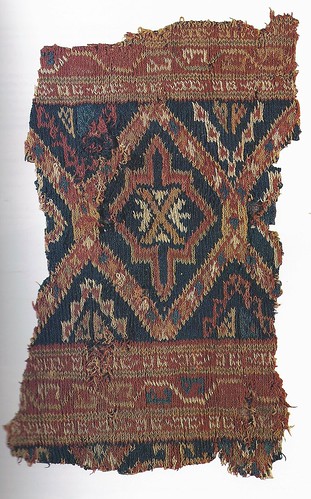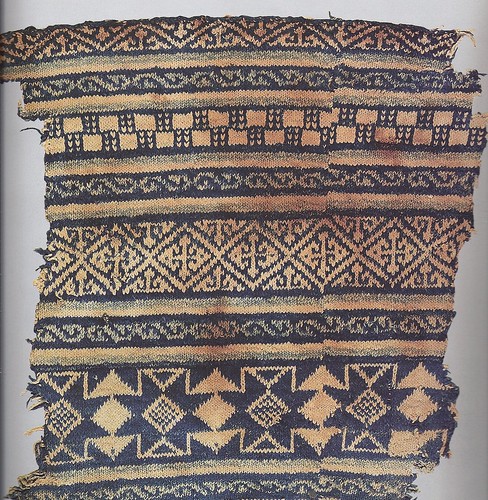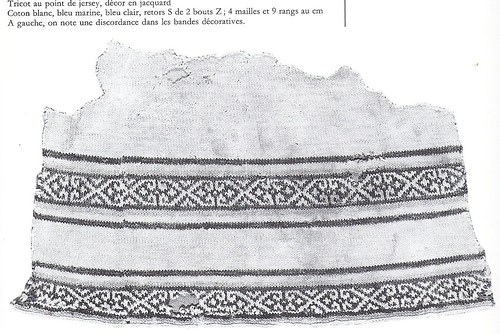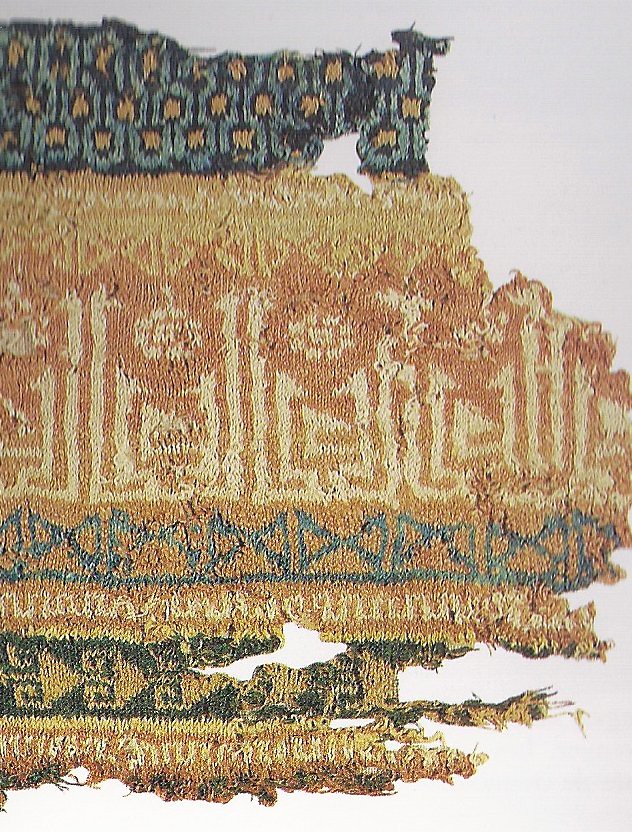I don't recall how I got there, but one link led to another, and next thing I knew, I was at the library asking them to find me a book about 8th-15th century Muslim textiles. A book about 8th-15th century Muslim textiles written in French, at which I'm really rusty. But I went ahead and placed the order through the Inter-Library Loan service at my local public library, and a few days ago it arrived!
The book is called
Tissus D'Egypte Témoins du Monde Arabe VIIIe-XVe Siècles (Egyptian Fabrics Witnesses of the 8th-13th Centuries), and is the catalogue raisonné for an exhibit of the same name at the Geneva (Switzerland) Museum of Art & History in 1993. It must have been a pretty awesome exhibit, and if I'd been in Europe then, I'd totally have gone. Anyway, as soon as the librarian put the book in my hands, I went straight to a table and started looking at all the pretty pictures. I was pleasantly surprised that, for the most part, I could understand the captions and could generally make out what materials things were made from, where it was found and when. Those 8 years I spent learning French weren't wasted after all.
 |
| This was knit at 17.5 stitches per inch! |
Finally, at chapter 10, I found the knits (everything to this point had been woven), and they were definitely impressive. One of my favorites is #161, a fragment of knitting in red, blue, ochre and yellow wools. It's knit very finely in stockinette stitch, 7 stitches per cm. I think that translates to something like 17.5 stitches per inch. Whomever knit this piece was using some very tiny needles! It was found in Fustat, Egypt, and is believed to have been made sometime around 1070 A.D. I wish I could see the back of it, though, to find out if the color work was stranded, intarsia, or duplicate stitched. It's not known whether this item was used as clothing or whether it might have been made for furniture.
 |
| Can you see the jog where it was knit in the round? |
Another one that I like is #167, a fragment of knitting in white, light blue and dark blue cottons. This one is knit at a slightly larger gauge at 5 sts/cm (12.5 sts/inch). What's really neat about this fragment is that it's very clear that it was knit in the round, as the jog between the rounds can be seen about 1/3 of the way in from the left. It's attributed to 11th-12th century Fatimid Egypt and is believed to be an article of an adult's clothing. Again, I'd like to be able to see the back of it, to wrap my head around how this knitter did the color work.
 |
| This is thought to have been a hat. |
In all, there were 13 examples of knitting in the book, many of which had Arabic script knit into them. There were 3 knitted tubes shown, 2 with script and one with geometric bands, that are believed to be belts. There was also a fragment in cotton which is believed to be a hat. What's so impressive about these items is the skill demonstrated by the knitters. The stitches are fine and even, with very complex color work. It was an engrossing rabbit hole, to say the least, and I hope that the next time I get to go somewhere, there will be a textile museum for me to check out.
Until next time, Friends!




Nice. Maybe we can find some knitting like this somewhere on display.
ReplyDelete